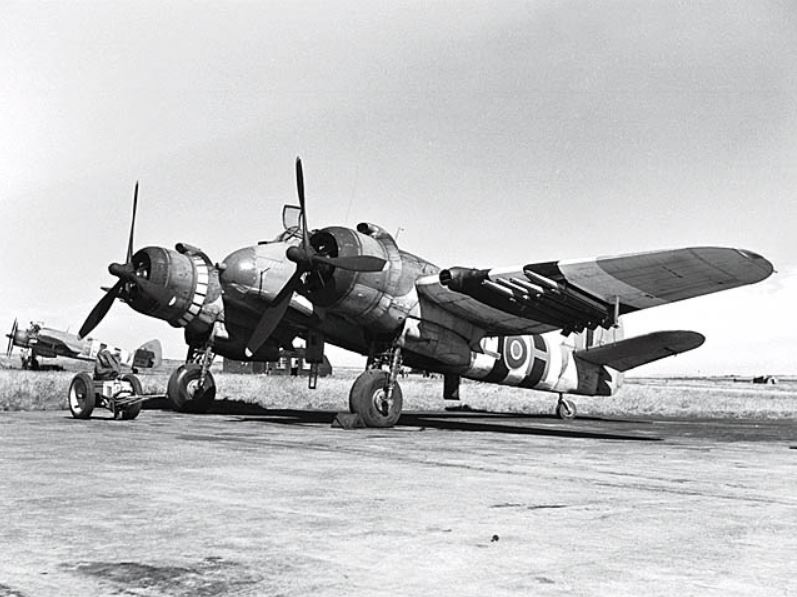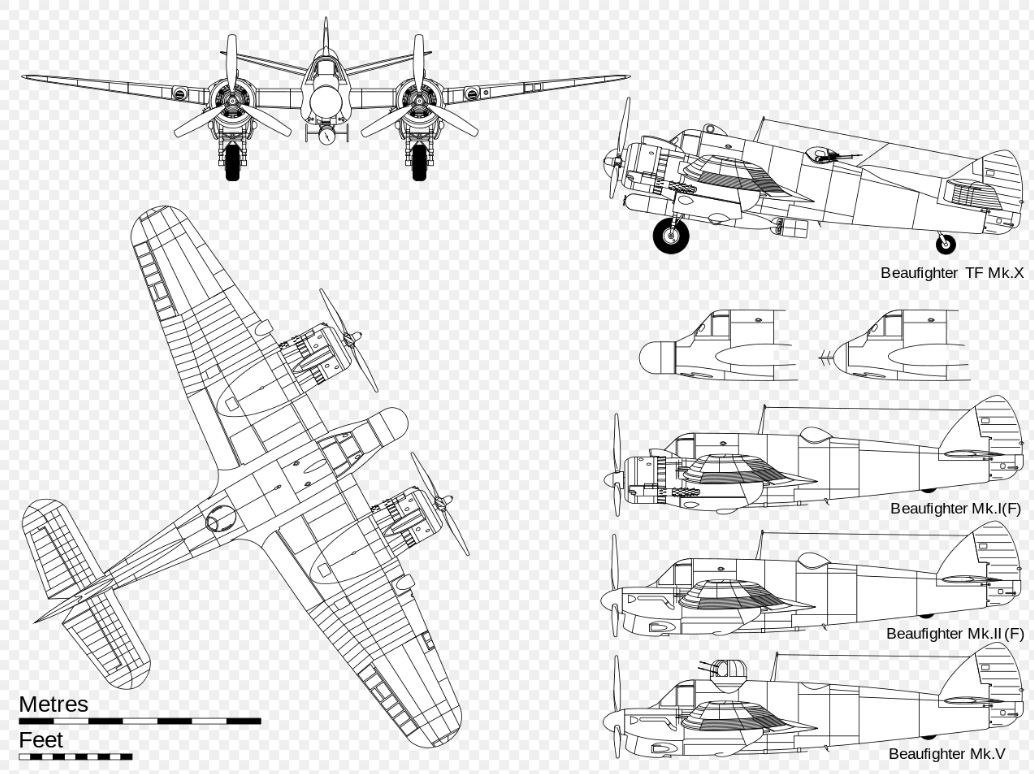Bristol Beaufighter
From Our Contribution
Contents
Remarks
The Beaufighter saw extensive service during the war with the RAF (59 squadrons), Fleet Air Arm (15 squadrons), RAAF (seven squadrons), Royal Canadian Air Force (four squadrons), United States Army Air Forces (four squadrons), Royal New Zealand Air Force (two squadrons), South African Air Force (two squadrons) and the Free Polish Air Force; one squadron. Over time 14 variants were built.
The first production Beaufighter was delivered to the RAF on 12 Aug 1940, and on 17/18 Sep 1940 Beaufighters from No. 29 Squadron conducted their first night patrol. Initial production deliveries of the Beaufighter lacked the radar for night fighter operations; these were installed during late 1940. In late Apr 1941 Mk II aircraft were delivered to operational squadrons and to the Fleet Air Arm, and the Mk VIF to squadrons in March 1942. Early US Squadrons in the Mediterranean were equipped with a hundred Beaufighters supplied while they awaited a US built fighter. In the Pacific Theatre it became known as "whispering death" by the Japanese due to its quiet engines, and it also operated out of India as a night fighter and as ground attack in Burma
Beaufighter Mk 21 - The Australian-made DAP Beaufighter. Changes included Hercules XVII engines, four 20 mm cannons in the nose, four Browning .50 in (12.7 mm) in the wings and the capacity to carry eight 5 in (130 mm) High Velocity Aircraft Rockets, two 250 lb (110 kg) bombs, two 500 lb (230 kg) bombs and one Mk 13 torpedo. The Royal Australian Air Force (RAAF) made extensive use of the type as an anti-shipping aircraft, such as during the Battle of the Bismarck Sea.
General characteristics
- Crew: Two - pilot, observor
- Length: 12.60 m
- Wingspan: 17.63 m
- Height: 4.83 m
- Empty weight: 7,072 kg
- Max takeoff weight: 11,521 kg
- Powerplant: 2 x Bristol Hercules XVII or XVIII 14 cylinder engines
- Maximum speed: 510 km/h
- Range: 2,820 km
- Service ceiling: 5,800 m
- Armament
- Guns: 4 x 20mm Hispano MkII cannon in nose; 1 x manually operated .303 Browning Machine Gun
- Rockets: 8 x 60 kg rockets
- Bombs: 2 x 110 kg bombs or 1 x Mark XIII Torpedo
Crew members
No. 54 Operational Training Unit
- Roy Joseph Smith 2 Aug 1942 - 15 Sep 1942
No 153 Squadron RAF
- Roy Joseph Smith 23 Feb 1943 - Apr 1944
No. 256 Squadron RAF
- Roy Joseph Smith 5 Oct 1942 - 23 Feb 1943
Ground Crew
No. 30 Squadron RAAF
- John Francis George Collins 10 Aug 1942 - 19 Dec 1943
No. 31 Squadron RAAF
- Ivan Lindsay Dunn Oct 1942 - 9 Feb 1943

